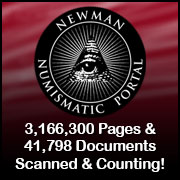
About UsThe Numismatic Bibliomania Society is a non-profit association devoted to the study and enjoyment of numismatic literature. For more information please see our web site at coinbooks.org SubscriptionsThose wishing to become new E-Sylum subscribers (or wishing to Unsubscribe) can go to the following web page link MembershipThere is a membership application available on the web site Membership Application To join, print the application and return it with your check to the address printed on the application. Print/Digital membership is $40 to addresses in the U.S., and $60 elsewhere. A digital-only membership is available for $25. For those without web access, write to: Charles Heck, Treasurer AsylumFor Asylum mailing address changes and other membership questions, contact Chuck at this email address: treasurer@coinbooks.org SubmissionsTo submit items for publication in The E-Sylum, write to the Editor at this address: whomren@gmail.com
BUY THE BOOK BEFORE THE COIN |
- WAYNE'S WORDS: THE E-SYLUM NOVEMBER 1, 2020
- KOLBE & FANNING AUCTION SALE 158 ANNOUNCED
- NEW BOOK: PRISON TOKENS OF THE U.S. AND CANADA
- NEW BOOK: BANKNOTES OF NEW ZEALAND TRADING BANKS
- VIDEO: AUBREY BEBEE INTERVIEWED
- VIDEO: THE ANS “GREATEST COINS” SERIES
- VIDEO CONFERENCE: GOBRECHT DOLLARS AT THE ANS
- SACAGAWEA MODEL RANDY'L TETON SPEAKS AT SCHOOL
- NOTES FROM E-SYLUM READERS: NOVEMBER 1, 2020
- NEW YORK'S NEW NUMISMATIC WALKING TOUR
- THE BRAILLE COINS OF ECUADOR
- VOCABULARY TERM: NICKEL-SILVER
- FRANCES MARIA KEELER MARSHALL (1810-1879)
- THE LEGENDARY COLLECTION OF WALDO NEWCOMER
- OLYMPIC CHAMPION SWIMMER DARA TORRES MEDAL
- CUSTOM AUGMENTED REALITY BANKNOTES OFFERED
- PAN FALL 2020 SHOW SUCCEEDS DESPITE PANDEMIC
- COLTRANE COLLECTION PART I U. S. CURRENCY PREVIEW
- DANIEL FRANK SEDWICK AUCTION 28 ANNOUNCED
- NUMISMATIC AUCTIONS LLC SALE 65 CATALOG READY
- NUMISMATIC NUGGETS: NOVEMBER 1, 2020
- GOLD IDES OF MARCH COIN REALISES $4M
- ELIZABETH I GOLD SOVEREIGN
- ENGLAND'S FIRST MILLED CROWN
- THE CROW, THE PITCHER, AND THE PEBBLE
- NOTGELD TALES
- FEDERAL PRISON BANK OF ALCATRAZ OVERSTAMP
- BILL FIVAZ'S WORLD'S WORST TYPE SET
- LOOSE CHANGE: NOVEMBER 1, 2020
- FEATURED WEB PAGE: BEARD TAX
Click here to access the complete archive
Click here to unsubscribe (scroll down)
To comment or submit articles, reply to whomren@gmail.com
Content presented in The E-Sylum is not necessarily researched or independently fact-checked, and views expressed do not necessarily represent those of the Numismatic Bibliomania Society.
WAYNE'S WORDS: THE E-SYLUM NOVEMBER 1, 2020
 New subscribers this week include:
Michael Louis John Winckless, courtesy Andrew Burnett, former Deputy Director-General of The British Museum;
and
Bruno Ovejero-Silva from Tucumán, Argentina, courtesy of Adrián Gonzalez-Salinas.
Welcome aboard! We now have 6,591 subscribers.
New subscribers this week include:
Michael Louis John Winckless, courtesy Andrew Burnett, former Deputy Director-General of The British Museum;
and
Bruno Ovejero-Silva from Tucumán, Argentina, courtesy of Adrián Gonzalez-Salinas.
Welcome aboard! We now have 6,591 subscribers.
Thank you for reading The E-Sylum. If you enjoy it, please send me the email addresses of friends you think may enjoy it as well and I'll send them a subscription. Contact me at whomren@gmail.com anytime regarding your subscription, or questions, comments or suggestions about our content.
This week we open with a new numismatic literature auction, two new books, updates from the Newman Numismatic Portal, and the American Numismatic Society.
Other topics this week include Randy'l Teton, New York coin dealers, the braille coins of Ecuador, collectors Mrs. Marshall and Waldo Newcomer, the PAN show, multiple auction previews, the gold EID MAR coin sale, notgeld, the Alcatraz overstamp, and the beard tax.
To learn more about an an original subscription set of Sylvester S. Crosby’s Early Coins of America, prison tokens, New Zealand banknotes, dealer Aubrey Bebee, Gobrecht Dollars, masked numismatics, nickel-silver, Craig silver and the greatest collection never to appear at auction, read on. Have a great week, everyone!
Wayne Homren
Editor, The E-Sylum
KOLBE & FANNING AUCTION SALE 158 ANNOUNCED
Hot on the heels of their great P. Scott Rubin library sale, here's the announcement for another super Kolbe & Fanning sale later this month. Great material!! -Editor
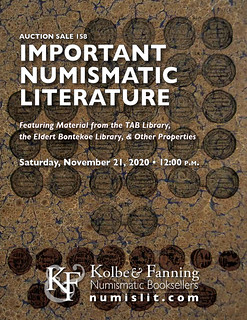 Kolbe & Fanning Numismatic Booksellers are announcing our Sale 158, which will be held on Saturday, November 21, 2020. The 467-lot sale features material from the TAB Library of works on ancient coins, the extensive working library of Eldert Bontekoe, and other properties. Most heavily focused on books and catalogues relating to ancient coins, the sale also features a substantial section on world coins and a smaller, but choice, selection of items of American interest.
Kolbe & Fanning Numismatic Booksellers are announcing our Sale 158, which will be held on Saturday, November 21, 2020. The 467-lot sale features material from the TAB Library of works on ancient coins, the extensive working library of Eldert Bontekoe, and other properties. Most heavily focused on books and catalogues relating to ancient coins, the sale also features a substantial section on world coins and a smaller, but choice, selection of items of American interest.
Some highlights of the sale include:
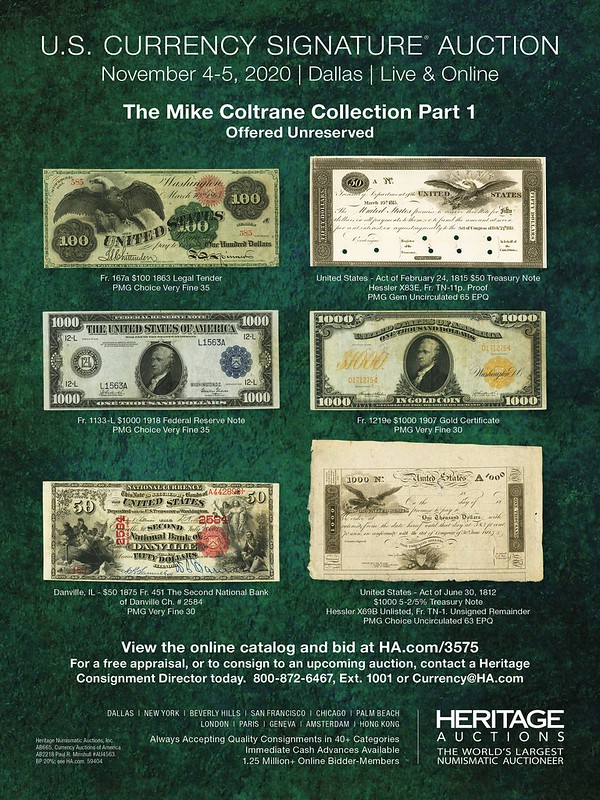
NEW BOOK: PRISON TOKENS OF THE U.S. AND CANADA
"After over two years of hard work Bob Hewey and Jim Delaney have finally completed Prison Tokens, Coupons and Scrip of the United States and Canada. 389 pages in full color and downloadable for free. The book is on the Newman Numismatic Portal published by the libraries of Washington University in St. Louis. To get your copy go to:
https://nnp.wustl.edu/library/book/589917"
Here's the text of the book's Foreword. -Editor
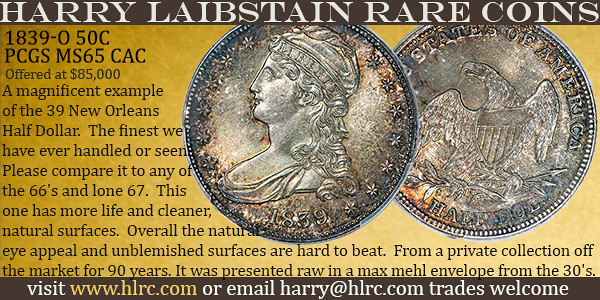
NEW BOOK: BANKNOTES OF NEW ZEALAND TRADING BANKS
Author Robert Pepping submitted this overview of his new book on the banknotes of New Zealand Trading Banks. Congratulations! -Editor
Bank of New Zealand
 In this 278 page book, I have attempted to provide facts, stories and information on each issued Bank of New Zealand note in New Zealand. These notes were issued from 1861 to 1934. I have not attempted to write an account of the Bank of New Zealand notes issued in Australia, but I have included information on the notes that were originally printed for issue in New Zealand but later modified for use in either Fiji or Samoa.
In this 278 page book, I have attempted to provide facts, stories and information on each issued Bank of New Zealand note in New Zealand. These notes were issued from 1861 to 1934. I have not attempted to write an account of the Bank of New Zealand notes issued in Australia, but I have included information on the notes that were originally printed for issue in New Zealand but later modified for use in either Fiji or Samoa.
The chapters in the book have not been ordered chronologically but by note denomination, from Ten Shillings to One Hundred Pounds. Some information has been repeated in later chapters to provide the best possible record of that note issue. For each chapter, information on each known issued, specimen or trial note has been recorded. This part of each chapter is not definitive as unknown notes will undoubtedly be revealed in the future. However, it provides a very exhaustive starting point for a collector of these notes and any further editions of the book will include updated information. During the period when Bank of New Zealand notes were issued, a number of counterfeit notes of various denominations and issues were produced. Their stories along with information on these forgeries have also been included in the relevant chapters.
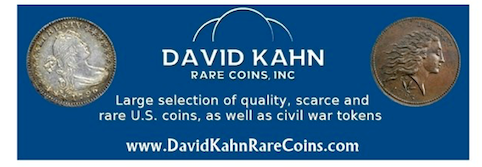
VIDEO: AUBREY BEBEE INTERVIEWED
These are selections from the David Lisot Video Library that feature news and personalities from the world of coin collecting. David has been attending coin conventions since 1972 and began videotaping in 1985. The Newman Numismatic Portal now lists all David’s videos on their website at:
https://nnp.wustl.edu/library/multimediadetail/522852
Here's one on dealer Aubrey Bebee. -Editor
ANA Numismatic Personality: Aubrey Bebee, August 9, 1986.
VIDEO: 21:20.
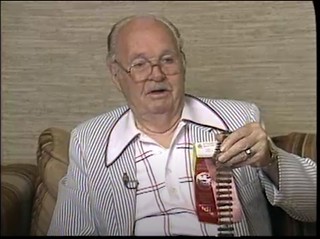 Perhaps no person is important to hobby of numismatics and the American Numismatic Association than coin dealer Aubrey Bebee. Always a staunch support of the organization he donated the famous 1913 LIBERTY NICKEL to the ANA Money Museum. Hear stories of Bebee and his numismatic journey interviewed by numismatist and journalist David Lisot.
Perhaps no person is important to hobby of numismatics and the American Numismatic Association than coin dealer Aubrey Bebee. Always a staunch support of the organization he donated the famous 1913 LIBERTY NICKEL to the ANA Money Museum. Hear stories of Bebee and his numismatic journey interviewed by numismatist and journalist David Lisot.
An excerpt of the video is available for viewing at:
https://nnp.wustl.edu/library/book/557343
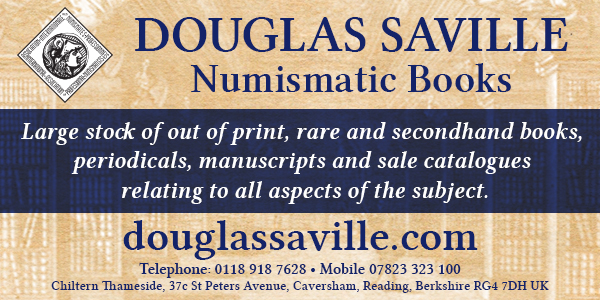
VIDEO: THE ANS “GREATEST COINS” SERIES
American Numismatic Society has announced a new video series. -Editor
The American Numismatic Society is pleased to announce the Greatest Coins video series.
In this series, short videos realized by our curatorial team will examine coins in the American Numismatic Society’s collection, carefully selected for their historical fame and significance. Intended for a wide audience of experts and non-experts alike, these videos will feature multimedia materials that contribute not only to the understanding of the historical and cultural context in which the selected coins were produced, but also to their reception history. The videos will be released on a monthly basis.

VIDEO CONFERENCE: GOBRECHT DOLLARS AT THE ANS
The American Numismatic Society Money Talks lectures are being held online. Although open to members only, these conferences are a great reason to join ANS. If interacting live isn't an option for you, the talk will be available as a video afterwards. -Editor
This Money Talks will be held live on zoom.
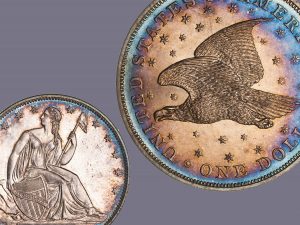 The ANS holds the world’s largest collection of Flying Eagle or Gobrecht Dollars in the world, with an example of every variety save one, as well as a group of extremely rare trial strikes and related patterns. The majority of the collection was donated by Dr. Julius Korein in 2008. The Flying Eagle Dollar remains an actively researched and highly controversial area of United States numismatics, and the ANS collection constitutes a unique and invaluable resource in their study. This presentation will explore the origins of the coin and the misadventures attending its design, leading to the final abandonment of the iconic flying eagle motif. Using never-before seen high-resolution images of coins from the collection, competing theories will be explored and discussed in an effort to better understand how and when the coins were produced and for what purpose.
The ANS holds the world’s largest collection of Flying Eagle or Gobrecht Dollars in the world, with an example of every variety save one, as well as a group of extremely rare trial strikes and related patterns. The majority of the collection was donated by Dr. Julius Korein in 2008. The Flying Eagle Dollar remains an actively researched and highly controversial area of United States numismatics, and the ANS collection constitutes a unique and invaluable resource in their study. This presentation will explore the origins of the coin and the misadventures attending its design, leading to the final abandonment of the iconic flying eagle motif. Using never-before seen high-resolution images of coins from the collection, competing theories will be explored and discussed in an effort to better understand how and when the coins were produced and for what purpose.
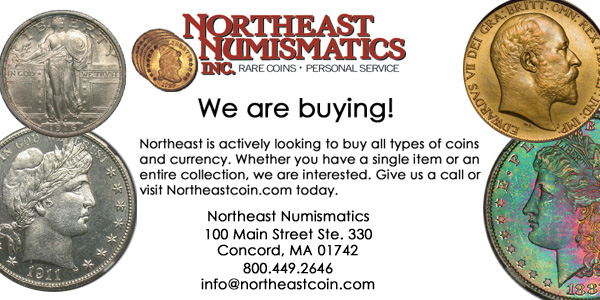
SACAGAWEA MODEL RANDY'L TETON SPEAKS AT SCHOOL
Local newspapers are great places to find interviews with numismatic personalities such as this one with Sacagawea coin model Randy'L Teton. -Editor
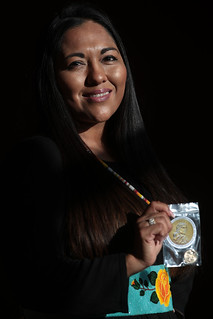 When most people envision Sacagawea, they think of her portrait on the golden dollar coin. They're thinking of a Fort Hall resident.
When most people envision Sacagawea, they think of her portrait on the golden dollar coin. They're thinking of a Fort Hall resident.
Randy'L Teton, the spokeswoman for the Shoshone-Bannock Tribes, modeled for the coin in 1998 and is the only living person who appears on U.S. currency. She spoke to students at Holy Rosary Catholic School on Friday morning about her experience and her Shoshone-Bannock heritage for the 20th anniversary of the coin's official debut by the United States Mint.
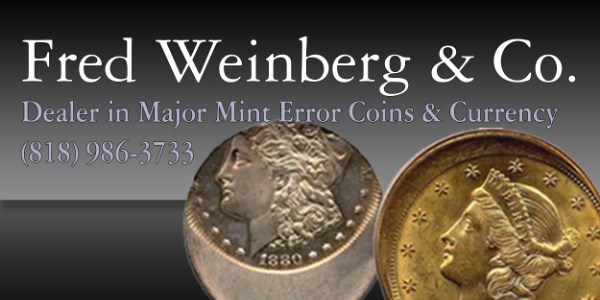
NOTES FROM E-SYLUM READERS: NOVEMBER 1, 2020
On the Stone Mountain Distinguished Service Medal
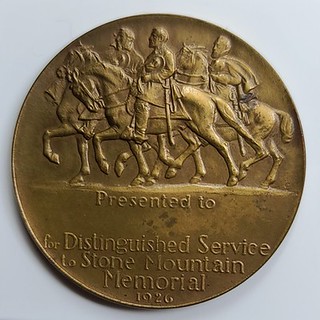 Regarding Ty Gardner's questions on the 1926 Stone Mountain Distinguished Service Medal,
Dick Johnson writes:
Regarding Ty Gardner's questions on the 1926 Stone Mountain Distinguished Service Medal,
Dick Johnson writes:
"Here is all we know: Catalog cards show these medals were issued in both bronze and gold. Quantities are unknown. MACO records no longer exist."
Thanks. Anyone with further information on these, please contact Ty Gardner at tygardner2006@yahoo.com . -Editor
To read the earlier E-Sylum article, see:
STONE MOUNTAIN DISTINGUISHED SERVICE MEDAL
(https://www.coinbooks.org/v23/esylum_v23n43a14.html)
Other topics this week include bookplates, colonial coins, and masks in numismatic images. -Editor

NEW YORK’S NEW NUMISMATIC WALKING TOUR
Paul Bosco submitted these notes on the new landscape of New York's rare coin district. Thanks! -Editor
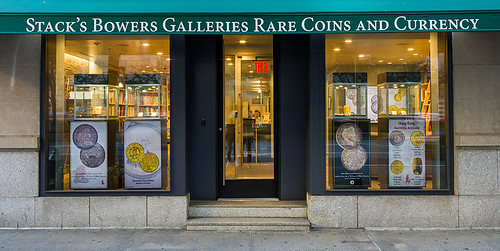
Stack's-Bowers has just opened its new store at 470 Park Ave, between 57th & 58th Streets. For more than half a century, they were located in the Salisbury Hotel on 57th Street, between 6th & 7th Aves, 3 1/2 blocks away. I think they were gently pushed out by the landlord/hotel. With their move, New York has a true rare coin district –for the THIRD time.

THE BRAILLE COINS OF ECUADOR
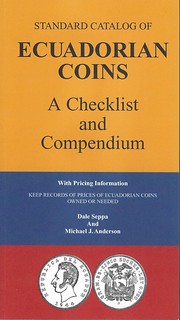 Tom Babinszki writes The Blind Coin Collector blog, and he asked me to look up a couple braille coins in Dale Seppa's new Standard Catalog of Ecuadorian Coins: the 1988-1991 10 Sucres (KM#92.2) and the 1991 50 Sucres (KM#93).
Tom Babinszki writes The Blind Coin Collector blog, and he asked me to look up a couple braille coins in Dale Seppa's new Standard Catalog of Ecuadorian Coins: the 1988-1991 10 Sucres (KM#92.2) and the 1991 50 Sucres (KM#93).
The catalog has little text in the modern section, and does not mention the braille dots. The coins are all pictured, and I see the dots on all 1988 denominations - 5, 10, 20, and 50 sucres. The 1991 coins aren't pictured, but I assume they have the same design. That makes eight different braille Ecuadorian coins. I reached out to Dale Seppa to confirm. -Editor
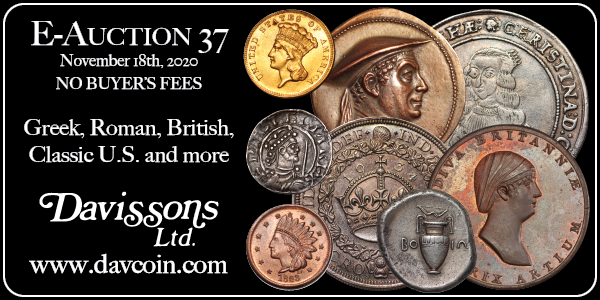
VOCABULARY TERM: NICKEL-SILVER
Dick Johnson submitted this entry from his Encyclopedia of Coin and Medal Terminology. Thanks. -Editor
Nickel-silver. An alloy of nickel, copper and zinc. Its gray-white color is in imitation of silver; but there is no silver in nickel-silver. Formerly this alloy was widely known as german-silver, but this term fell into disuse in World War I due to anti-German sentiment in England and America. While German-silver was known as early as the 1830s (from natural alloys found in Germany) it was not until the 1840s when experiments in England were conducted with brass. Nickel was added to brass until the gold-colored alloy turned silver-gray. By 1848 a successful nickel-brass alloy was in use, it was called albata.
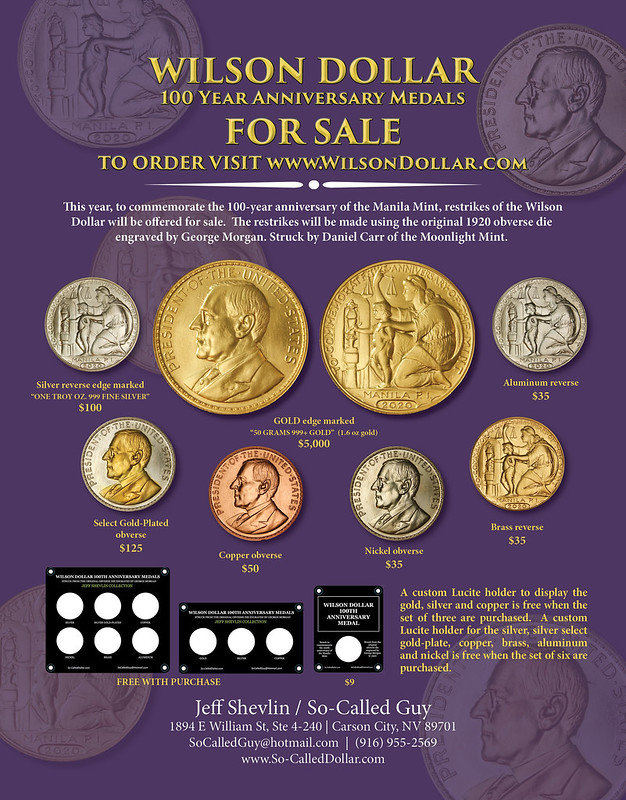
FRANCES MARIA KEELER MARSHALL (1810-1879)
John Lupia submitted the following information from the online draft of his book of numismatic biographies for this week's installment of his series. Thanks! As always, this is an excerpt with the full article and bibliography available online. This week's subject is about an early female U.S. numismatist, Mrs. Marshall. -Editor
Frances Maria Keeler Marshall (1810-1879), was born on November 22, 1810 at Kortright, New York, the daughter of Judge Martin Keeler (1781-1860), a native of Connecticut.
She married Dr. Robert S. Marshall, M.D. (-1850), on August 14, 1832 at the Presbyterian Church, South Kortright, New York. They had four children : Henry (1838-), Louisa Mary (1842-), Robert (1844-), and Helena (1850-).
They most probably built their house on the property purchased by Robert Marshall in 1834 at what is now designated as 48 Maple Avenue, Village of Hobart, Township of Stamford, Delaware County, New York.
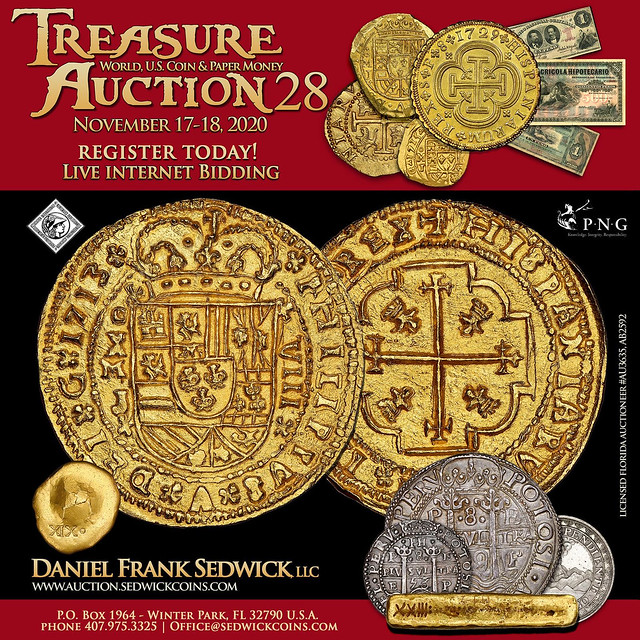
THE LEGENDARY COLLECTION OF WALDO NEWCOMER
Charles Morgan and Hubert Walker of CoinWeek published a nice article October 26, 2020 about the legendary collection of Waldo Newcomer of Baltimore, Maryland. Here's an excerpt, but be sure to read the complete article online. -Editor

According to researcher George Fuld, who published a lengthy exploration into Newcomer’s holdings between 2006 and 2008, the U.S. section of the collection was nearly complete, lacking only a single double eagle and the 1822 half eagle, of which only three are known. Fuld stated that Newcomer had a complete series of U.S. copper and silver coins. Helping Newcomer in assembling the collection was numismatist George Williams, who spent more than 20 years assisting in the effort.
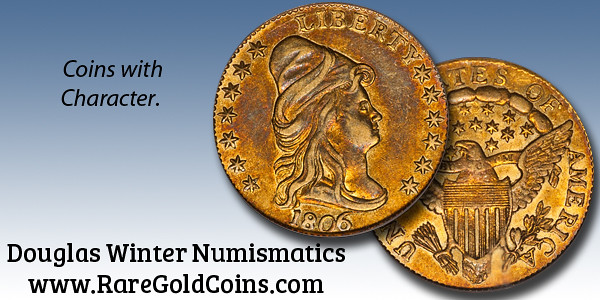
OLYMPIC CHAMPION SWIMMER DARA TORRES MEDAL
The Jewish-American Hall of Fame has announced its latest inductee - Olympic gold medal Swimmer Dara Torres. A medal has been created in her honor. Here's the press release. -Editor
into the Jewish-American Hall of Fame
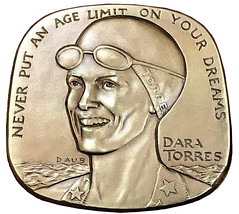
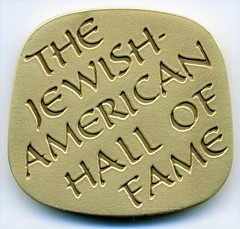
The Jewish-American Hall of Fame has inducted its first female sports star in 2020 - Olympic swimming champion Dara Torres. Torres competed in five Olympic Games, winning 12 medals. In her first Olympics, in 1984, she won a gold medal for the 100–meter relay. She went on to compete in the 1988, 1992, 2000, and 2008 Olympics, winning five medals in 2000, more than anyone else on her team. In 2008, the oldest–ever Olympic swimmer at age 41 (having given birth only a year earlier), won two silver medals for 100-meter medley relay and 50–meter freestyle, breaking the American freestyle record she had set at age fifteen.
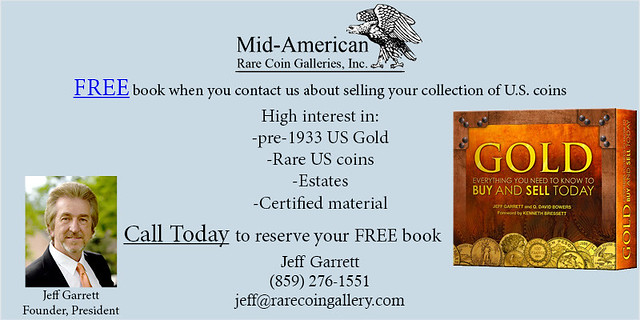
CUSTOM AUGMENTED REALITY BANKNOTES OFFERED
This press release announces a whole new way to look at banknotes. Not the government-issued kind, but privately issued souvenir and event documents. See the demo videos online for the full experience. -Editor
Money Talks (And Sings, Dances, Or Spits Fire) with New Augmented Reality App from International Banknote Printer Royal Joh. Enschedé
This is the concept behind a custom designed banknote containing a new augmented reality (AR) app offered by Royal Joh. Enschedé, the 300-year-old globally renowned printer of banknotes, stamps and other security documents.
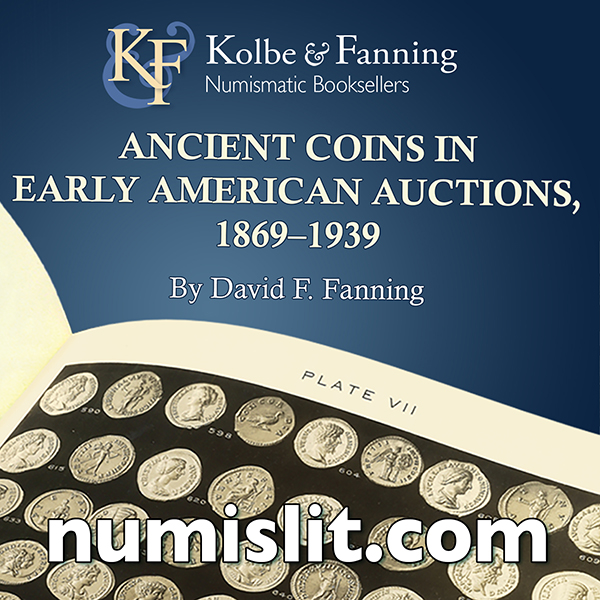
PAN FALL 2020 SHOW SUCCEEDS DESPITE PANDEMIC
Until nearly the last minute, organizers of the Pennsylvania Association of Numismatists fall 2020 show couldn't be sure local authorities would allow the event to be held. They planned ahead nevertheless, but couldn't even contract the usual advertising in the usual local and national publications due to the uncertainty. Yet the event was indeed held, and was a success on all fronts. Kudos to PAN and everyone involved, including the dealers and public who were quite compliant and supportive overall, cooperating with little grumbling amid all the necessary health precautions. Here are some photos and a few early comments from attendees. -Editor
PAN Corresponding Secretary Pat McBride writes:
"Any photos without masks were for a few seconds only. It went extremely well. Attendance did not fall off due to Covid. Amazing cooperation with forms and masks. All dealers reported a great show. They loved the setup at the larger North Hall."
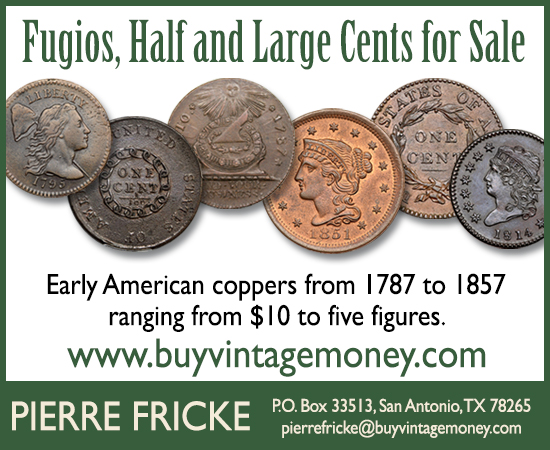
COLTRANE COLLECTION PART I U. S. CURRENCY PREVIEW
Stu Levine, Bruce Hagen, and Maureen Levine submitted this preview of additional U.S. paper money lots in the upcoming Heritage sale of the Mike Coltrane Collection, Part 1. Thanks! -Editor
U. S. Currency Preview
In the past few issues we previewed many of the great rarities in The Mike Coltrane Collection Part 1. It's a fascinating grouping, with notes spanning virtually all genres of U.S. currency: Colonial notes, Continental Currency, War of 1812 Treasury Notes (the first portion of the finest collection ever assembled) as well as Federal large and small size issues. Many of these pieces have been off the market for decades and are all offered completely unreserved. An eclectic sampling is below:

DANIEL FRANK SEDWICK AUCTION 28 ANNOUNCED
Here's the announcement for the upcoming auction sale by Daniel Frank Sedwick, LLC. Great variety of nice coins, medals and paper money. Be sure to check out the full catalog online. -Editor
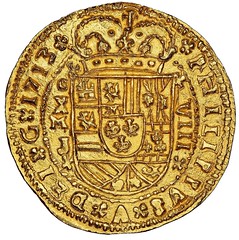
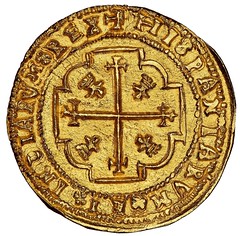
Lot 21
This time we are doing something different by beginning the Gold Cobs section with those from mainland Spain before moving to gold cobs of the New World. It is here you’ll see the extremely rare and gorgeous 1713J Mexico cob 8 escudos Royal graded NGC MS 66 from the Corrigan’s wreck site of the 1715 Fleet (lot 21), its first appearance at auction and our first time offering a type considered to be the pinnacle of Spanish colonial numismatics. Clyde Kuntz, the diver who discovered the coin in 1998, will be speaking online the day prior to the auction about his experience of finding a coin "made for a king." Following Mexico is a selection of some of the choicest Lima gold cobs ever seen from the 1715 Fleet, in addition to gold cobs from all the other South American mints that made them.
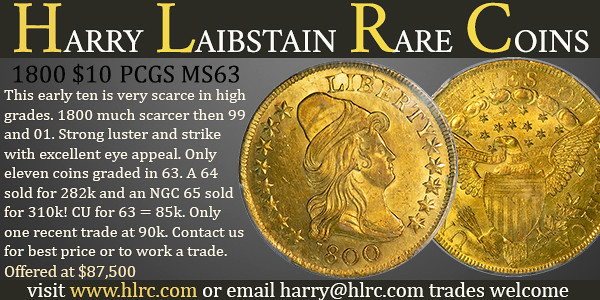
NUMISMATIC AUCTIONS LLC SALE 65 CATALOG READY
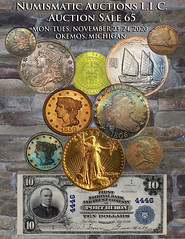
The catalog for the Numismatic Auctions LLC sale 65 is online and available for viewing or download. The sale will be held November 23-24, 2020. Here are some lots that caught my eye - see the catalog and the earlier article for highlights. -Editor
Lot 3: North West Company Token
North West Company Token, 1820. Brass. Breen-1083. PCGS
Genuine, VF details, Environmental Damage and holed. Only a
handful of these exist unholed or unimpaired. Red Book listed and
always in demand, a legendary numismatic relic of the fur trade, the
Hudson Bay Company and Native American commerce. Rare.
THE BOOK BAZARRE
NUMISMATIC NUGGETS: NOVEMBER 1, 2020
Here's a selection of interesting or unusual items I came across in the marketplace this week. Tell us what you think of some of these. -Editor
Gaul Euburovices Hemistater
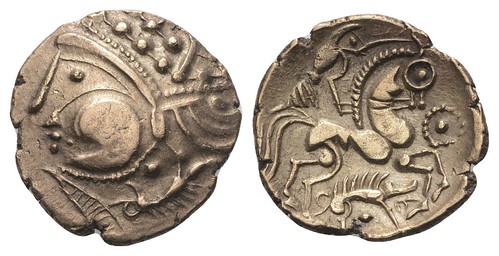
Gaul. Euburovices.
Hemistater (gold). Approx. 110-50 BC BC
Vs: stylized head on the left.
Rs: rider on horseback galloping to the right, boar below.
18 mm. 2.94 g.
I love these stylized designs. From the Solidus Auction 66. -Editor
To read the complete lot description, see:
Lot 2
Gaul. Euburovices.
(https://solidus-numismatik.auex.de/Auktion/Onlinekatalog?intAuktionsId=980)
Other topics this week include a Russian beard token, an 1868 Proof Eagle, -Editor
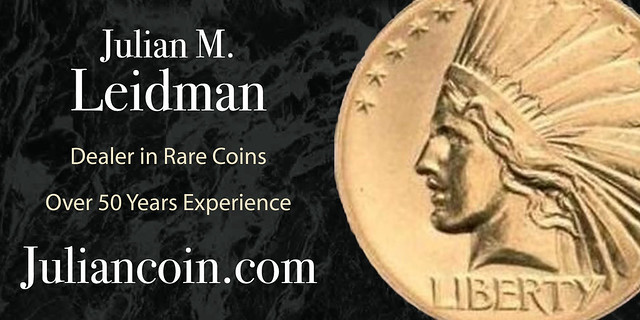
GOLD IDES OF MARCH COIN REALISES $4M
The gold "Ides of March" coin sold this week for over four million dollars and generated news coverage around the world. Dave Sundman was the first to share the news with this article from The Sunday Times. -Editor
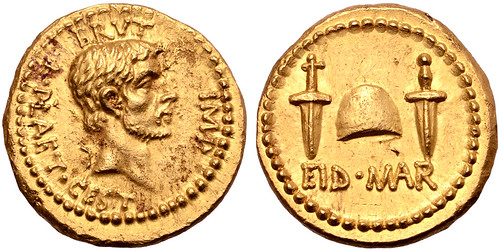
A gold coin issued by Brutus and described as a “naked and shameless” celebration of the assassination of Julius Caesar has sold for £3.2 million, a record for an ancient coin.
The gold aureus, which depicts the daggers of Marcus Junius Brutus and his fellow assassin Cassius, with the inscription EID MAR — for the ides of March, the date of the murder — is one of only three of its kind known. The others are on long-term loan to the British Museum and in the collection of the German Federal Bank.
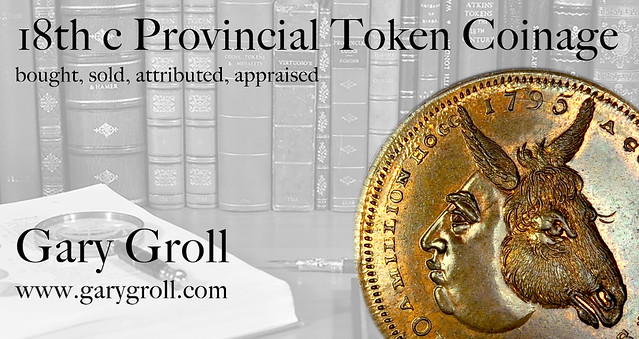
ELIZABETH I GOLD SOVEREIGN
This Heritage press release highlights an Elizabeth I gold sovereign. Nice coin! -Editor
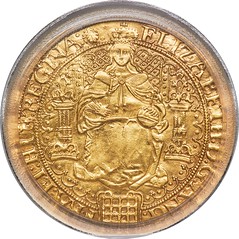
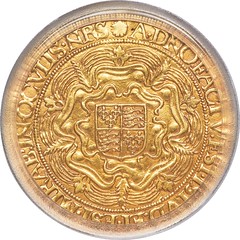
A 430+ Year Old Coin Fit For the Queen (And Her Favorite Nobles)
Most coins that you have in your pocket today are average at best--pedestrian pieces of commerce that can be owned by nearly anyone. However, Heritage will be offering a coin in the October World Coin Auction #3088 that was fit for a queen (and her most trusted nobles). The piece in question is a very special Queen Elizabeth I gold Sovereign that was minted between 1584 and 1586. This oversized gold coin will immediately catch your attention and has an impressive portrait of the Virgin Queen on the obverse as well as the famous Tudor rose on the reverse. Graded AU details by PCGS, this coin will attract significant attention when it crosses the auction block.

ENGLAND'S FIRST MILLED CROWN
Another Heritage press release highlights an Oliver Cromwell Crown in their November 5-6 sale. -Editor
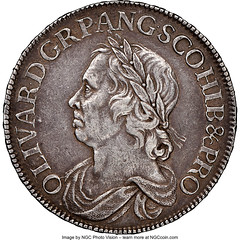
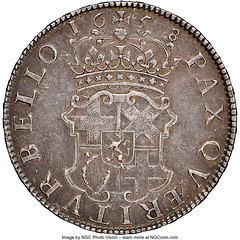
England's First Milled Crown
Milled coinage, or machine-struck coinage, ushered in an era of new technology for minting in England. It is used to describe coins that are struck by machine rather than hammered by hand, and the difference in quality of production is clear when you compare an older hammered piece with the newer quality available with milled pieces. These coins, struck in the 1650s, were novel at the time and revealed the best of new technology in the British Isles.
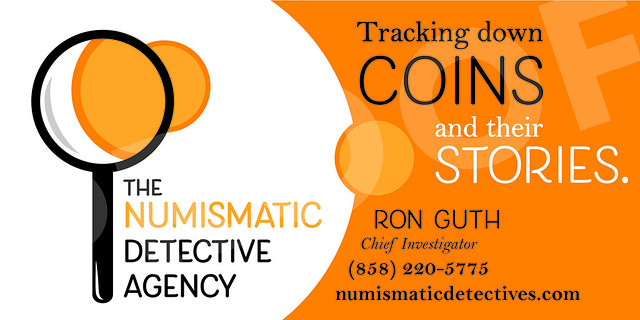
THE CROW, THE PITCHER, AND THE PEBBLE
Maureen Levine writes:
"In working on the upcoming Mike Coltrane North Carolina currency internet sale at Heritage Auctions, I did some research on the crow and pitcher vignette, one of the eight different types on the $1/2 Halifax series notes. To my knowledge, the origin and meaning of that vignette has not been discussed previously."
Maureen submitted the following article. Thank you! Images courtesy Heritage Auctions. -Editor
THE BOOK BAZARRE
NOTGELD TALES
Alisha Ankin is a collections specialist working with the National Numismatic Collection. This week she authored a Smithsonian O Say Can You See? blog post about WWI emergency money. A couple of the pieces are especially appropriate for Halloween. See the complete article online for more. -Editor
After the end of World War I, Germany was in economic crisis and was unable to provide enough currency for its citizens. In response, cities and towns under German control created their own form of emergency currency, called notgeld, to supplement the limited national currency in circulation. The locally-issued notgeld were highly illustrated, colorful, and featured scenes of local architecture and culture.
One particularly interesting element of these notes is the frequent depiction of local legends and folklore. These scenes provide a lens into how local folklore and history might have provided messages of comfort or warning at a time of uncertainty. The following four pieces of notgeld offer a glimpse into life in Germany after the end of the First World War.
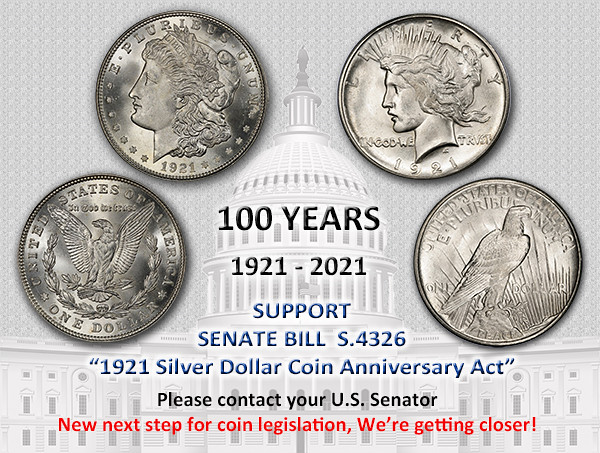
FEDERAL PRISON BANK OF ALCATRAZ OVERSTAMP
We've often discussed overstamped banknotes. An item pictured in the new book on Prison Money (described elsewhere in this issue) prompted me to reach out to co-author Bob Hewey for more information. -Editor
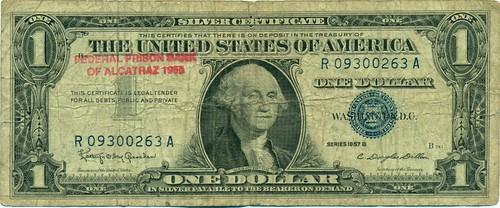
"Federal Prison Bank of Alcatraz 1955" overstamp
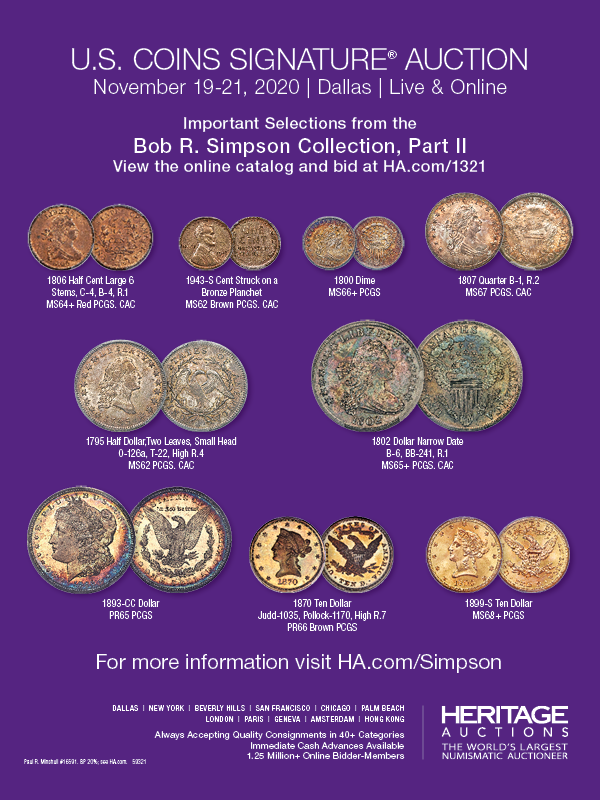
BILL FIVAZ’S WORLD’S WORST TYPE SET
Everyone wants to collect the best this or the best that. But collecting the WORST can be an affordable yet still difficult challenge. Stack's Bowers Galleries published this announcement of their upcoming sale of Bill Fivaz’s "World’s Worst Type Set". -Editor
In an endeavor that spanned more than 25 years, noted numismatist and researcher Bill Fivaz put considerable efforts into obtaining and downgrading coins for his self-named “World’s Worst Type Set.” As those who know Bill fondly recall, he would show off these heavily worn and sometimes nearly unidentifiable coins at his local coin club and various shows. In recent years, PCGS has recognized this special area of collecting and has created “Low-Ball” Registry Sets, where the lowest grade (Poor-1) is the “best” obtainable specimen.
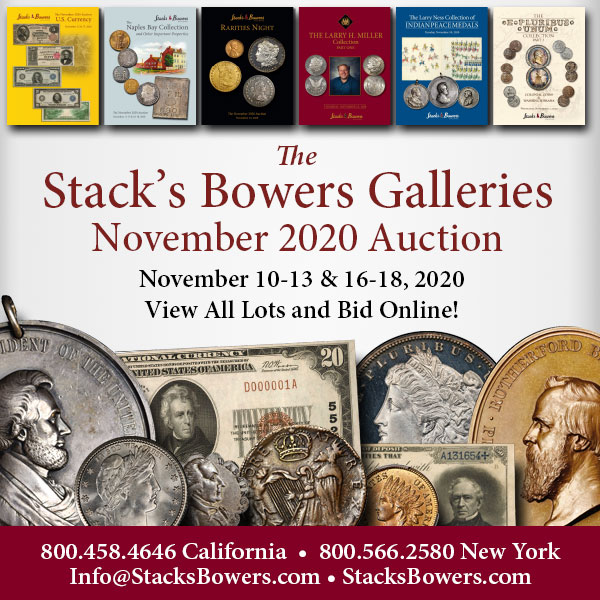
LOOSE CHANGE: NOVEMBER 1, 2020
Here are some additional items in the media this week that may be of interest. -Editor
Greek Black Sea Colonies
On CoinWeek Steve Benner published the second article in a series on the Greek colonies on the northern coast of the Black Sea. This counterstamped piece really stood out to me. -Editor
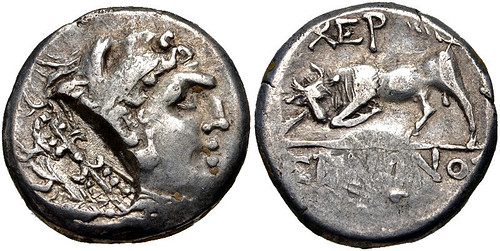
Tauric Chersonesus, Chersonesus, AR Trihemidrachm, Head of Herakles right, wearing lion skin with a thunderbolt countermark within incuse rectangle and a reverse of a bull butting left; XEP above and ?ENONOS in exergue; SNG BM Black Sea 778-82, 17.5 mm, 4.60 g, 250-230 BCE. (CNG 405, lot 155, $650, 1/26/17).
To read the complete article, see:
Tyras & Chersonesus: Ancient Greek Coins of the Black Sea’s Northern Coast
(https://coinweek.com/ancient-coins/tyras-chersonesus-ancient-greek-coins-of-the-black-seas-northern-coast/)
Other topics this week include Tulipmania. -Editor
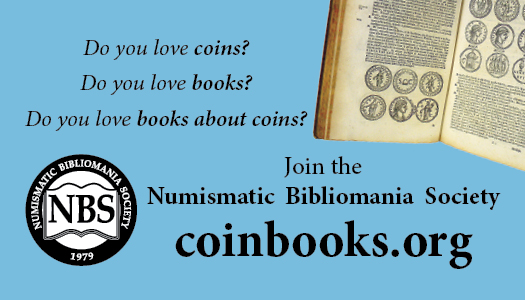
FEATURED WEB PAGE: BEARD TAX
This week's Featured Web Page is a Wikipedia history of beard taxes and the Russian beard tokens.
In 1698, Emperor Peter I of Russia instituted a beard tax to bring Russian society in line with Western European models. To enforce the ban on beards, the tsar empowered police to forcibly and publicly shave those who refused to pay the tax. Resistance to going clean shaven was widespread with many believing that it was a religious requirement for a man to wear a beard.
The tax levied depended upon the status of the bearded man: those associated with the Imperial Court, military, or government were charged 60 rubles annually; wealthy merchants were charged 100 rubles per year while other merchants and townsfolk were charged 60 rubles per year; Muscovites were charged 30 rubles per year; and peasants were charged two half-kopeks every time they entered a city.
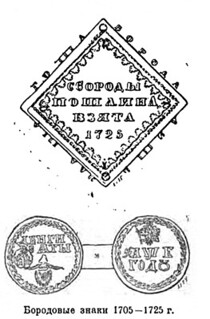
https://en.wikipedia.org/wiki/Beard_tax
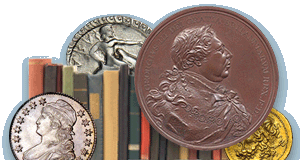
The E-Sylum is an electronic publication of the Numismatic Bibliomania Society
Copyright © 1998 - 2025
